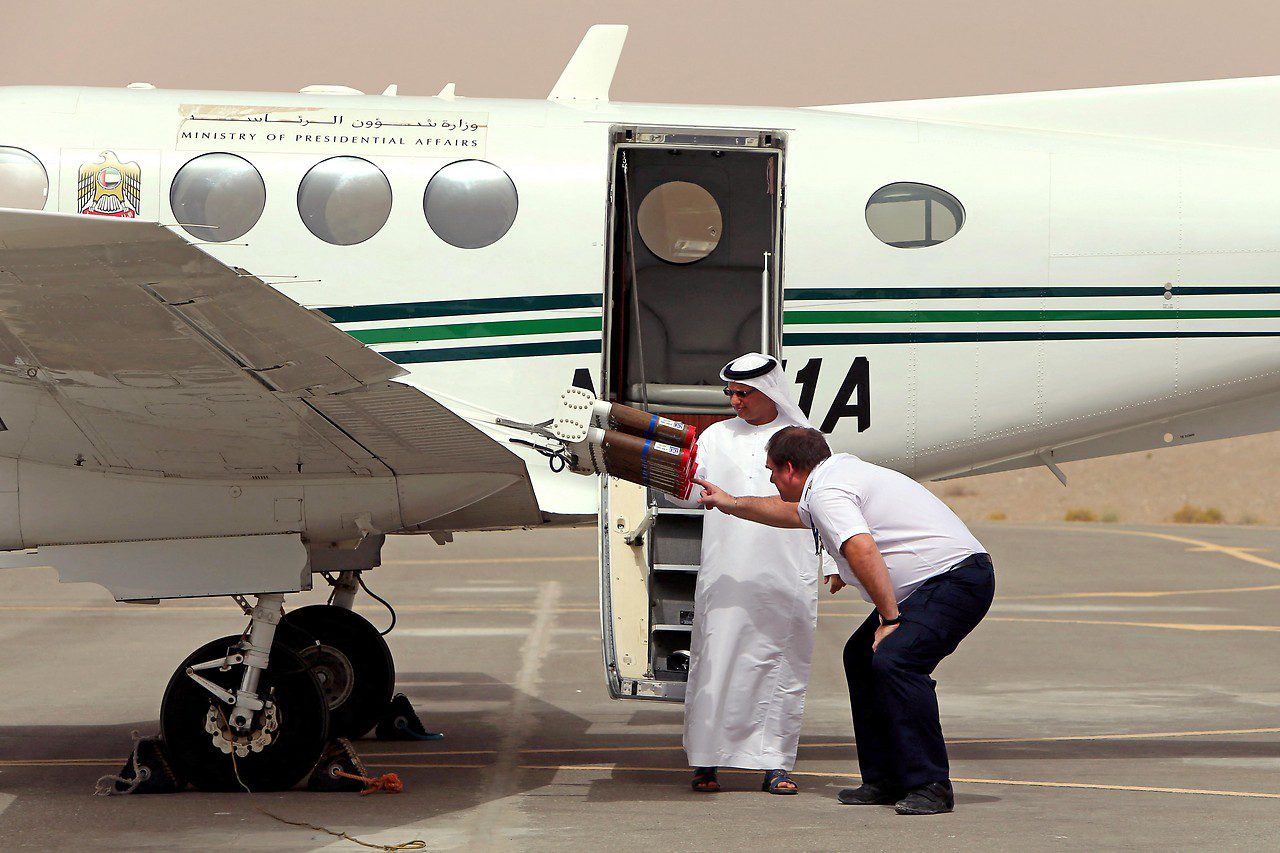The UAE has been pouring hundreds of millions of dollars into research and experiments with “cloud seeding” for more than two decades. They received support from the United States, such as NASA. In addition to salts, the UAE uses nanotechnology that they have developed themselves and is better adapted to regional conditions. Experiments are also conducted using drones, which are supposed to release electrical charges into clouds and thus cause precipitation.
Man forced rain is nothing new. The first attempts to do this were made more than 70 years ago. Salts and chemicals are injected into the cloud to force sedimentation. These molecules attracting water should combine with the water vapor molecules in the cloud and condense, that is, seep out. The particles get larger and heavier and should rain down as droplets. In many countries, especially China, this “cloud pollination” is used over and over again.

distrust of Iran
The potential water from the sky also tempts many countries in the Middle East to do the same as the UAE. Saudi Arabia began its cloud program in April, and the second expanded tranche followed in the summer. Morocco and Ethiopia are also investing in this technology, while other countries in the Middle East and North Africa are considering investing in artificially causing rainfall.
The race for water from above also has a geopolitical component – with a new possibility of conflict, this time over water. As early as 2018, an Iranian general in the Revolutionary Guards announced in a speech that Israel and another country, the UAE, would work to ensure that the Iranian clouds did not fall. Iran is suspicious of most of the Persian Gulf states.
However, scientists are skeptical whether the clouds will remain long enough to reach another country. And Israel abandoned its cloud program last year after nearly half a century — the program was uneconomic, an expert involved in the program told the New York Times (“The New York Times”).
High demand for water
The UAE’s ruling sheikhs will not be deterred from further investing in the cloud software, it is now being expanded. They have long recognized the economic importance of the availability of water in addition to the oil wealth that still exists. The demand for water is constantly increasing. In the past sixty years alone, the population of the Emirates has grown from 100,000 to nearly ten million today. Boom cities on the Persian Gulf, such as Dubai, in particular, have high water consumption.

The country does not have any reserves of fresh water, and like many other Gulf countries, there are no rivers either. Much of the water supply depends on seawater desalination. However, compared to artificial rain, this consumes large amounts of energy, the head of the National Center of Meteorology and Seismology (National Center of Meteorology, NCM) in the Emirates, Abdullah Al-Mandoos, is convinced by “NYT”. NCM manages the Emirates Cloud Program.
There are nearly a dozen pilots in the UAE on standby around the clock for artificial rain in order to quickly stay in the air, depending on the meteorological forecast. They have to bring the chemicals to the base of the cloud. According to The Economist, there are an average of at least 200 flight missions in the clouds each year. As an alternative, ground-based generators located on the mountains were used, Al Arabiya news portal reported.

Efficacy not scientifically proven
There is no clear evidence that cloud seeding actually makes a difference, and therefore it is well worth the cost and effort. In practice, there are other challenges: Not all clouds have enough moisture for the possibility of precipitation. Especially in particularly hot regions, raindrops can actually evaporate before they reach the ground.
In other cases, the effect may be greater than intended, or the precipitation may be caused by winds in a different area than intended. “You can change a cloud, but you can’t tell it what to do after you change it,” American atmospheric scientist James Fleming told the New York Times.
The World Meteorological Organization (WMO) is also skeptical. Cloud seeding is used in many countries to combat drought and reduce hail and snowfall in ski areas. Effects of the measures and actual change “remain an active area of research”.

“Food practitioner. Bacon guru. Infuriatingly humble zombie enthusiast. Total student.”








More Stories
Kyiv: Russian Kursk offensive halted
US Presidential Election: Former US Government Officials Warn Against Donald Trump's Election
Netherlands wants to leave asylum system